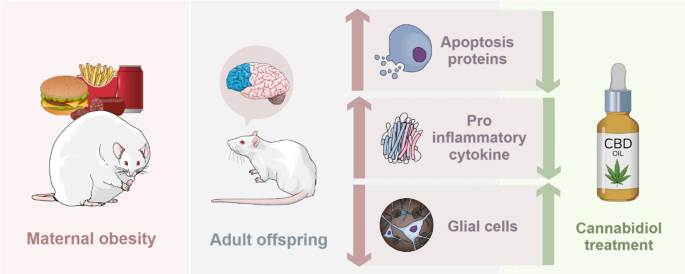
“This study evaluated the effects of dietary cannabidiol (CBD) supplementation on behavior, blood parameters, oxidative status, metabolomic profile, and the fatty acid composition of meat and liver in rabbits.
A total of 42 New Zealand White × California rabbits (60 days old; 1:1 sex ratio; average weight 1621.3 ± 46.2 g) were randomly assigned to two groups (a control group, CTRL, and a CBD group, n = 21 each). Both groups received the same commercial diet, with the CBD group additionally supplemented with 0.1 mL of cannabis extract in coconut oil, corresponding to 10 mg CBD/animal/day. At 92 days of age, rabbits were slaughtered, and samples were collected for analyses.
Results showed that CBD supplementation significantly improved body weight gain, reduced plasma triglyceride levels, and enhanced oxidative status.
Behavioral observations indicated increased motor and grooming activities in CBD-supplemented animals, suggesting enhanced psychological well-being. The fatty acid profile of meat and liver was not significantly altered by CBD supplementation.
Overall, dietary CBD demonstrated the potential to positively influence physiological and behavioral responses, representing a promising strategy to enhance animal welfare and productivity in rabbit farming. Although no adverse effects on lipid profiles were observed, further studies are warranted to explore CBD’s role in lipid metabolism and cholesterol regulation.”
https://pubmed.ncbi.nlm.nih.gov/40905739/
“Animal health and welfare are essential for ethical farming and high-quality food production. This study evaluated the effects of dietary cannabidiol (CBD) supplementation on behavior, some blood parameters, and fatty acid composition in meat and liver of rabbits. CBD is gaining attention for its pharmacological properties and its role in the endocannabinoid system. The results suggest that CBD supplementation can influence behavioral and physiological responses in rabbits, offering potential benefits for both animal welfare and meat quality.”

